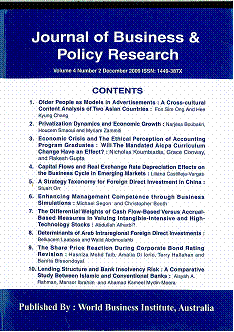Journal of Business and Policy Research
Vol. 11. No. 2., December 2016, Pages: 1 – 22
Structural Changes and the Effects of Monetary Policy: Evidence from China
Xiang Gao and Seewon Kim
This paper examines the effects of monetary policy in association
with structural changes in Chinese economy over the period 1992-
2014. First this paper applies a threshold co-integration test to
examine the stability of money demand function. The test indicates
that money demand function experiences structural changes
around 2002 and it becomes unstable after 2002. Given the
instability of money demand function, the paper evaluates the
effects of monetary policy in two periods before and after 2002.
The VAR analysis indicates that the monetary policy is effective
before 2002 with the stable money demand function, whereas it
becomes ineffective after 2002 with the unstable money demand
function. The reasons for the regime changes in the effects of
monetary policy in association with instability of money demand
function may be international financial market crisis, financial
innovation and liberalization and others. The result reported in this
paper implies that the policy authority in China had better adjust
the monetary policy instruments to maintain the effectiveness of
monetary policy.
DOI :
https://doi.org/10.21102/jbpr.2016.12.112.01

